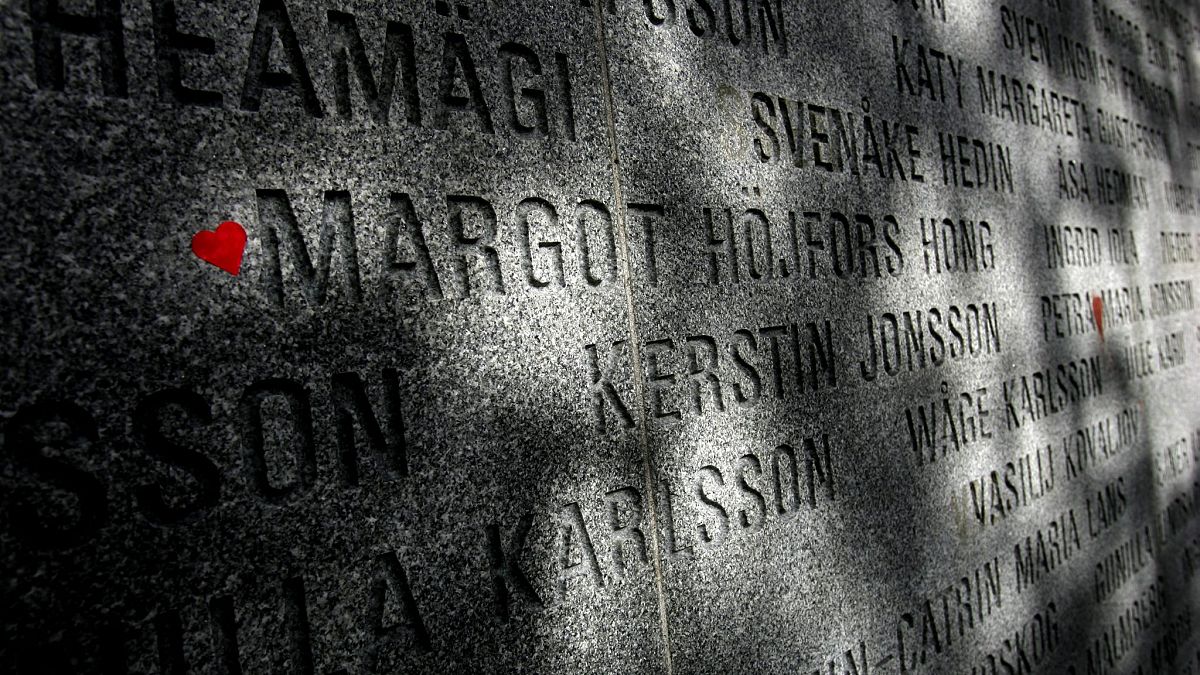A preliminary examination report has said that newly discovered damage was too small to have sunk the MS Estonia, which killed 852 people in 1994.
The 1994 MS Estonia ferry disaster was not caused by hull damage, a preliminary investigation has found.
A report published on the Estonian government website has concluded that the newly-discovered damage was too small to have sunk the ship as quickly as it did.
The marks on the ship were first revealed in a September documentary, which featured new underwater images from the wreck.
But after investigating video footage of the ferry's starboard side, experts say that damage did not cause the disaster.
"In any scenario, the size of the visible damage opening cannot be the reason, why the ship sank at the known time frame," the report said.
"The findings cannot change the conclusions presented in the final report ... thus, further investigation for the reason for the sinking of MS Estonia does not seem reasonable."
The preliminary report also stated that the hole in the ship was unlikely to have been caused due to a collision at the sea surface.
"The characteristics of the penetration dent and the fracture were not typical for a blast opening nor for a man-made cut opening," it added.
"Possible explanation for such damage could be a contact with an underwater object such as a seabed rock."
A spokesperson for the Estonian government emphasised to Euronews that the new report was only preliminary and had no official status.
It is understood that the findings were released in the interest of transparency, and Estonia is not opposed to a new investigation on the "obvious fracture" in the ship's hull, they added.
What happened to the MS Estonia?
The sinking of the MS Estonia in the Baltic Sea remains the deadliest peacetime shipwreck in European waters for centuries.
As many as 852 people were killed when the ship sank in a storm on 28 September 1994 between Stockholm and Tallinn.
Passengers from 17 countries drowned in the disaster, including 501 Swedes and 285 Estonians, while only 137 passengers and crew on board survived.
The wreck is considered a graveyard, which gives the area protected status under the law - the makers of the documentary were arrested after exploring the site with a remote-controlled submarine.
But director Henrik Evertsson said it was "absolutely essential and important from a journalistic point of view" to send a camera to the site.
"Estonia: the discovery that changes everything" aired on the Discovery Network last month and suggested that a "collision with a submarine" was the most likely cause of a four-metre gash in the ship's hull.
Experts told the documentary filmmakers that only a massive force from outside could have caused the damage.
That prompted Scandinavian leaders to "evaluate" the new information after initial reluctance to re-investigate the causes of the disaster.
However, authorities said that the findings "cannot change the conclusions" on how the MS Estonia sunk.
An official investigation in 1997 said that the locking system of the ship's retractable door was defective, flooding the car deck and causing the vessel to roll over and sink.
Ann Linde, Pekka Haavisto, and Urmas Reinsalu — the foreign ministers of Sweden, Finland, and Estonia said that they “rely on final conclusions”.
Yet many theories about the causes of the wreck have been circulating for years and relatives of those killed have been fighting for a more thorough investigation.
